The article “ANĀHĪD: The Cult and Its Diffusion” written by M. L. Chaumont was originally published in the Encyclopedia Iranica on December 15, 1989 and updated on August 3, 2011. Kindly note that excepting one photo, all other images and accompanying captions that appear below do not appear in the Encyclopedia Iranica publication.
=====================================================================================
Although the Greeks sometimes assimilated Anāhitā to Aphrodite (e.g., Herodotus, Historiae 1.131-32, knows her by the name of Aphrodite Urania and compares her with the Assyrian Mylitta and the Arabian Alilat) or Athena, they most often viewed her as the Persian Artemis. She is not named in the Elamite texts found at Persepolis and dating from the reigns of Darius I and Xerxes. In 405 B.C., the year of the accession of Artaxerxes II Mnemon, there was a temple at Pasargadae in Persis dedicated to a warrior goddess who, according to Plutarch (Artaxerxes 3), could be compared with Athena; no doubt it was a temple of Anāhitā in one of her most important aspects. The fact that Artaxerxes II Mnemon (404-359 B.C.) received consecration in the kingship at this temple after he had donned the robe of Cyrus (Plutarch, loc. cit.), suggests that the Achaemenid monarchy had close links with Anāhitā, especially in her war-goddess aspect. Moreover Mnemon was the first Achaemenid to insert the names of Anāhitā and Mithra, after that of Ahura Mazdā, in official documents (Kent, Old Persian, p. 154). According to a passage from the Chaldaica of Berosus conserved by Clement of Alexandria (Protrepticus 5.63.5, ed. C. Mondésert and A. Plassard, Paris, 1949, p. 139), the same king caused statues of “Aphrodite Anaitis” to be erected in major cities of his empire such as Babylon, Susa, Ecbatana, Persepolis, Bactra, Damascus, and Sardis. Plutarch (Artaxerxes 27) also states that Artaxerxes Mnemon piously made his concubine Aspasia become a priestess of “Artemis whom they call Anaitis.” It was probably in his reign that the Anāhitā cult began to gain ground in Asia Minor and Syria before spreading to Armenia.
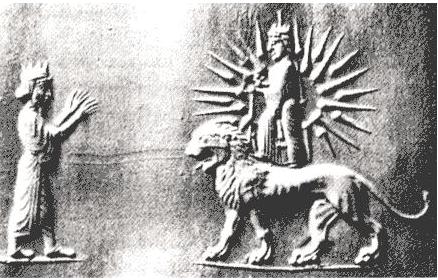
King Artaxerxes II (at left) facing the goddess Anahita who sits atop a lion (Picture Source: OwnerlessMind). In the background to Anahita can be seen the clear display of the sun which is a representation of the ancient Iranic god Mithras. Note that the sun emanates 21 rays, the same symbol which is used by varous ancient Iranic cults among the Kurds of Iran, Iraq and Turkey. The 21 rays may be related to the festival date of Mehregan (Festival of the Sun-god Mithra) which takes place from the 16th to the 21st of Mehr of the Iranian calendar.
The cult long flourished in Lydia, which had temples of the Persian Artemis at Sardis, Philadelphia, Hierocaesarea, Hypaipa, Maeonia, and elsewhere; the temple at Hierocaesarea had reputedly been founded by Cyrus (Tacitus Annals 3.62). From the 2nd century A.D. there is an account of the ceremonies performed in accordance with ancient Mazdaean ritual at Hypaipa and Hierocaesarea, as personally witnessed by the geographer Pausanias (Description of Greece 7.27.5. For monuments and inscriptions in honor of Artemis Anaïtis in Lydia and Catacecaumene, see I. Diakonoff, in Babesch. Bulletin Antieke Beschaving, 1979, pp. 145f., 148f.). At Zela in Pontus the goddess was venerated together with two associate gods, Omanos and Anadates (Strabo Geography 11.8.4, 12.3.37); in Cappadocia likewise she and Omanos had common altars (ibid. 15.3.15). At Castabala she was named Artemis Perasia (ibid. 12.2.7). In connection with the cult of Artemis/Anaïtis, Hellenic-style games were held at places such as the Anaeiteia at Philadelphia, the Artemisia at Hypaipa, and the Sakaia at Zela. The fact that bulls were the animals sacrificed to Anaïtis probably explains why in Lydia, Cappadocia, and Armenia she was assimilated to Artemis Tauropola or Taurica. It was through this channel that the taurobolium (bull-sacrifice ritual) spread to Europe.
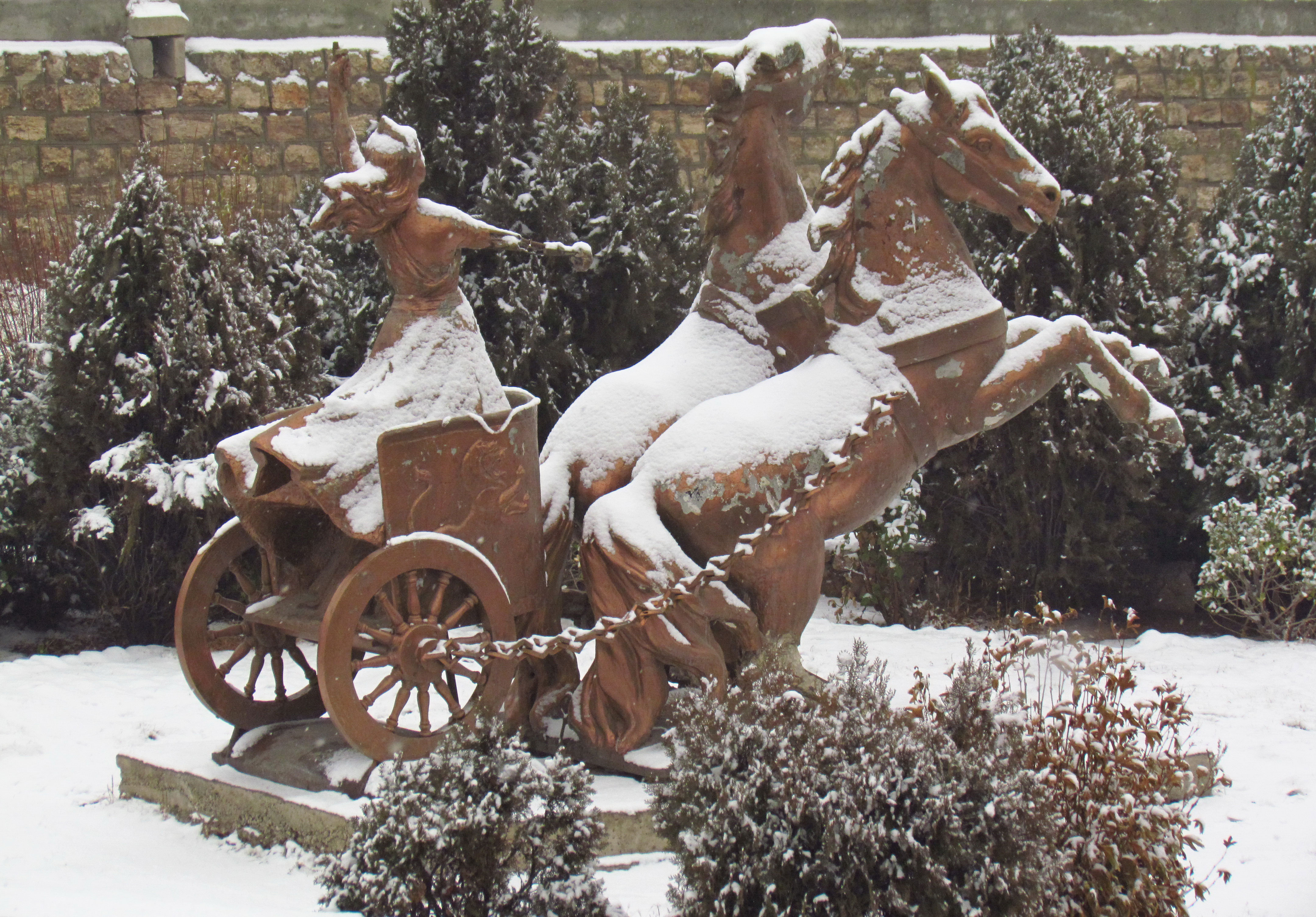
Statue of Anahita in Maragheh, in Iran’s east Azarbaijan province (Picture Source: -ایوب فارابی اصل- in Public Domain).
The Armenians, according to Strabo (Geography 11.14.16), shared in the religion of the Persians and the Medes and particularly honored Anaïtis. From the 1st century A.D. onward, a temple of this goddess at Eriza (Erez) in Acilisene enjoyed great fame; an unverifiable tradition ascribed its foundation to Tigranes the Great (Moses of Khoren 2.14 in Langlois, Historiens II, p. 88). This holy place, “the wealthiest and most venerable in Armenia” (Cicero Pro lege Manilia 9.23), was staffed with priests and priestesses; daughters of the most eminent families were required to serve as prostitutes in it before marrying (Strabo Geography 11.14.16), an element likely borrowed from the Semitic religious practices (E. Meyer, Lexikon der griechischen und römischen Mythologie, ed. W. H. Roscher, I, 1884, col. 333). Anaïtis was worshipped at Eriza in the guise of a huge gold image. In 34 B.C. (rather than 36 B.C.) this idol was taken away by Mark Antony’s soldiers who smashed it and shared the fragments among themselves (Pliny, Naturalis historia 33.82-83). Acilisene, being the cult’s main center in Armenia, came to be known as Anaetica, i.e., the land of Anaïtis (Dio Cassius 36.48.1; Pliny Naturalis historia 5.83). Another region lying on the Cyrus river, near the borders of Iberia and Albania, was also called “the land of Anaitis” (Dio Cassius 36.53.5); like Acilisene, it was doubtless the territory of a temple dedicated to Anāhitā but otherwise unknown. The kings of Armenia were steadfast supporters of the cult at Eriza, which seems to have been closely associated with the national monarchy. Tiridates III, before his conversion to Christianity, prayed officially to the triad Aramazd-Anahit-Vahagn but is said to have shown a special devotion to “the great lady Anahit . . . the benefactress of the whole human race, mother of all knowledge, daughter of the great Aramazd” (Agathangelos, section 22, in Langlois, Historiens, I, p. 127). According to Greek version of the Book of Agathangelos, tradition required the kings to travel annually to Eriza on the occasion of the goddess’s festival (G. Garitte, Documents pour l’étude du livre d’Agathange, Vatican City, 1946, p. 78).
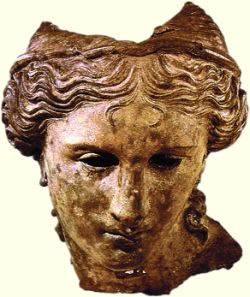
Goddess Anahit – the Armenian equivalent to Anahita (Source: անհայտ in Public Domain). Anahit First century BCE cast bronze head larger (once part of a statue). Currently housed at the British Museum, this was discovered close to Satala in Armenia in the 19th century.
Tiridates accordingly made this pilgrimage and offered sacrifices as well as wreaths and boughs to Anāhīd (Anahit) in the first year of his reign (Agathangelos, section 21, in Langlois, I, pp. 125-26). Anāhīd was also worshiped at the capital, Artashat (Artaxata), at Astishat, in Taron (south of Armenia) and at many other places. At Artashat her temple was close to that of Tiur (Tīr), the oracular god assimilated to Apollo. At Ashtishat, one of the main centers of Armenian paganism associated with the god Vahagn (Verethragna) and the goddess Astlik, she was worshiped in the guise of a golden idol apparently known as oskimayr “the golden mother” (Agathangelos, section 141, in Langlois, Historiens I, p. 173). Another center of Anāhitā’s worship was the city of Tomisa on the Euphrates in Sophene (south-west Armenia) on the Cappadocian frontier. In 69 B.C., the soldiers of Lucullus could see in the territory of Tomisa plenty of sacrificial cows roaming around freely, which were consecrated to Persia Artemis and bore on the head the brand of her in the shape of a torch (Plutarch Lucullus 24.6). After the conversion of Tiridates, the images of Anahit throughout Armenia were smashed.
Regarding the Caucasian countries adjacent to Armenia, Strabo (Geography 11.2.17) states that there was a temple dedicated to Leucothea, obviously an analogue of the Iranian goddess (O. G. von Wesendonck, Caucasica I, 1924, p. 87) in the land of the Moschi in Colchis. The legendary and late-dated Life of the Apostle St. Andrew mentions a cult of Apollo and Artemis, that is, Mithra and Anāhitā, in the same region. On the other hand there is not evidence of Anāhitā worship in Iberia, a country that had close ties with Armenia and Iran. In Albania the moon stood highest among three popular deities and was worshiped in a famous temple with a large staff of priests at a place near the Iberian frontier (Strabo Geography 11.4.7); some have tried to identify her with Anāhitā (See K. V. Trever, Ocherki po istorii i kul’rure Kavkazskoĭ Albanii, Moscow and Leningrad, 1950, p. 151), but this is questionable.
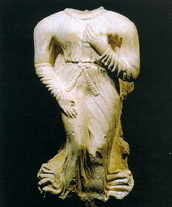
Depiction of Izad-Banu in the 4th millennium in modern-day Fars province (Photo Source: CAIS).
In Parthian territory, Ecbatana, the greatest metropolis of Media, retained a temple of Anāhitā where sacrifices were regularly offered (Isidore of Charax Mansiones Parthicae, sec. 6; Polybius Histories 10.27.12). At Concobar (Kangāvar) in Lower Media a temple of “Artemis,” built about 200 B.C., was standing when Isidore of Charax (ibid.) wrote, and some vestiges of this Greek-style edifice survive today (L. Vanden Berghe, Archéologie de l’Iran ancien, Leiden, 1959, p. 108; R. Ghirshman, Iran: Parthes et Sassanides, Paris, 1962, p. 24 and fig. 30; V. G. Lukonin, “The Temple of Anāhitā at Kangāvar,” VDI, 1977, no. 2, pp. 105-11). Isidore mentions two more temples of this goddess, both on the right bank of the Euphrates in Mesopotamia, one at Basileia (OPers. apadāna), reputedly founded by Darius, the other at Beonan (see M. L. Chaumont, La route royale des Parthes de Zeugma à Séleucie du Tigre, forthcoming).
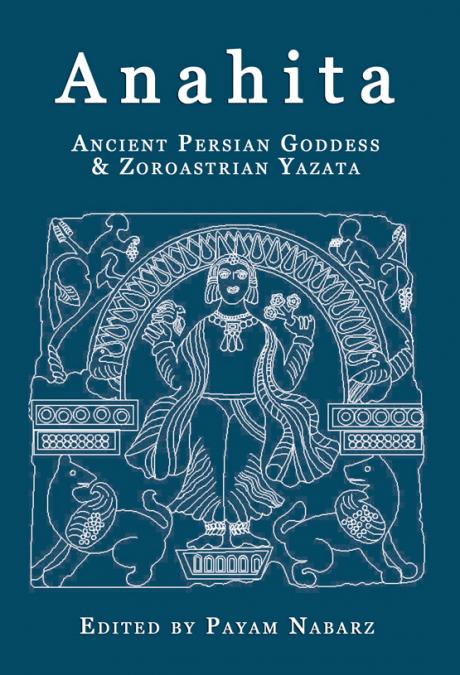
New Book: Anahita-Ancient Persian Goddess & Zoroastrian Yazata (edited by Payam Nabarz) –for more click here…
Susa likewise had a place of worship that, in the words of Pliny (Naturalis historia 6.35), was Dianae templum augustissimum. Not far away was a temple in Elymais called Ta Azara, which was sacred to both Athena and Artemis (Strabo Geography 16.1.18); tame lions were to be seen in it. In Persis the cult was centered in Eṣṭaḵr (Persepolis), where Anāhitā was worshiped in her aspect of war-goddess, as she had been at Pasargadae in the Achaemenid period (see above). Around the end of the 2nd century A.D., the temple of Anāhitā at Eṣṭaḵr was in the custodianship of Sāsān, who was also a hunter and an intrepid warrior (T. Nöldeke, Geschichte der Perser, p. 4). His son Pāpak killed the king of Eṣṭaḵr and seized the throne. It seems probable that Pāpak continued to be the high priest after he made himself king, because a rock carving shows him making an officiant’s obeisance before a fire altar while wearing a crown and holding a sort of scepter in his left hand, with his son Šāpūr on horseback close by him (E. Herzfeld, Iran in the Ancient East, London, 1941, p. 307, figs. 401 and 402).
Pāpak’s son Ardašīr rebelled against his Arsacid suzerain and gradually conquered all the Parthian territories. He may perhaps have inherited the high priesthood of Anāhīd and have derived his spiritual authority mainly from it; in any case he showed great devotion to the goddess, to whom he sent heads of his slain enemies (Nöldeke, Geschichte der Perser, p. 17). As for Ardašīr’s son and successor, Šāpūr I, the fact that he named his daughter Ādur-Anāhīd (Anāhīd of the fire) is certainly significant. In the reign of Bahrām II (276-83), the ambitious Magian Kirdēr, who had been steadily rising in the religious hierarchy and tightening his political grip, reached the zenith of his power when the monarch appointed him chief mōbad and judge of the empire and at the same time “ēwēnbad (master of ceremonies) and supreme head of the fire
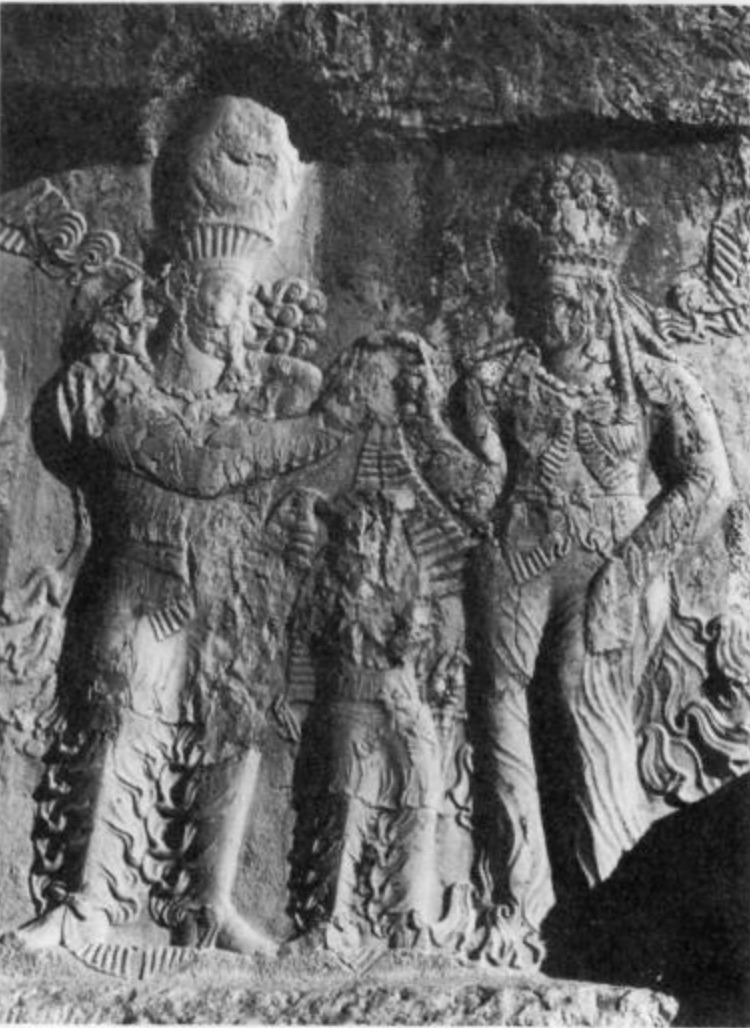
Rock relief at Nagshe Rustam depicting Sassanian king Narseh (r. 290-303 CE) being invested with the regal wreath by Anahita (Source: Encyclopedia Iranica).
Šāpūr II, according to a Christian hagiographic text, caused the heads of twelve Christian martyrs to be exposed, in conformity with ancient custom, in the temple at Eṣṭaḵr (see J. Labourt, Le Christianisme dans l’empire perse, Paris, 1904, p. 71, n. 2). It has been suggested that a passage in the Pahlavi Dēnkard (p. 413) refers to the construction of a temple of Anāhīd by Šāpūr II, but the text has ābān-ḵāna (house of the waters), and the interpretation is questionable. No further evidence on the Sasanian monarchy’s association with Anāhīd comes until the reign of Ḵosrow II Parvēz. In an investiture scene carved in high relief in the grotto of Ṭāq-e Bostān, Ḵosrow II receives crowns from Ōhrmazd and Anāhīd; the goddess wears a crown similar to Ōhrmazd’s and holds a pitcher of flowing water in her left hand (see below; Christensen, Iran Sass., p. 460; Vanden Berghe, Archéologie, p. 104).
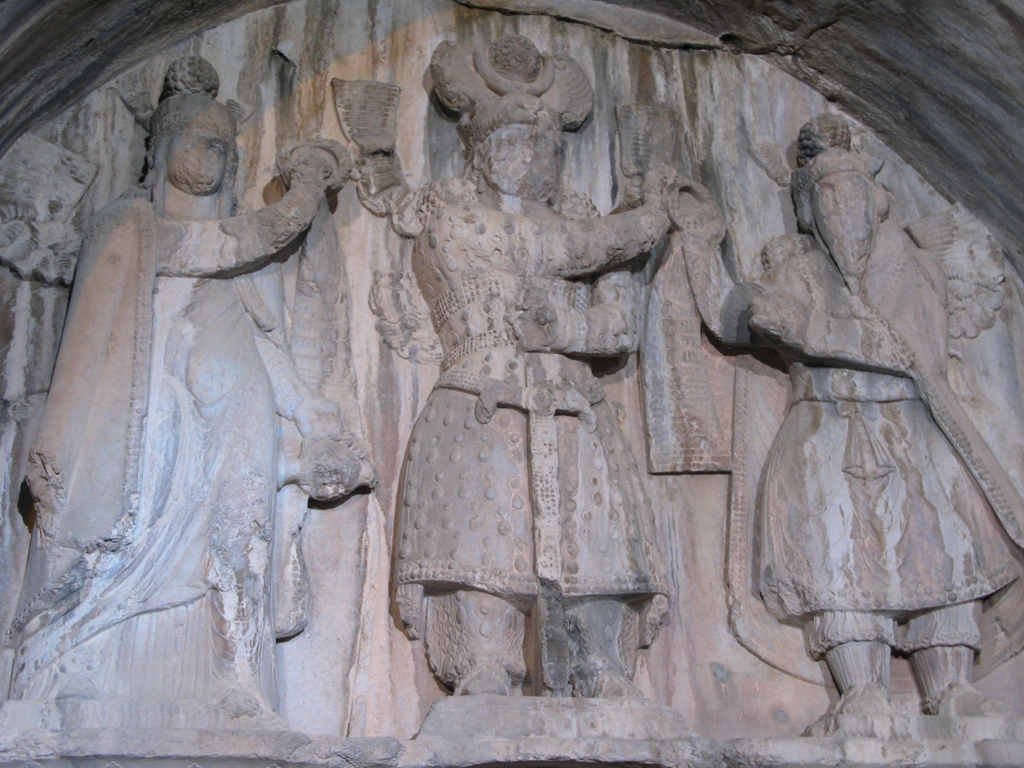
Investiture scene above the late Sassanian armored knight at the vault at Tagh-e Bostan. To the left stands Goddess Anahita with her right hand raised, holding a diadem of glory or “Farr” towards Khosrow II at center who receives a diadem with his right hand from Ahura-Mazda or the chief Magus. Anahita was a revered goddess of war among Sassanian warriors (Source: Shahyar Mahabadi, 2004).
She also appears, holding a garland of flowers in one hand and a lotus in the other, on one of the capitals of the two columns that once stood in front of the grotto (Vanden Berghe, Archéologie, p. 105; Ghirshman, Iran: Parthes et Sassanides, fig. 376). The statement of Ṭabarī (Nöldeke, Geschichte der Perser, p. 397) that the last Sasanian king, Yazdgerd III, was crowned in the “temple of Ardašīr” at Eṣṭaḵr is interesting because of the similarity of this name to that of the “temple of Anāhīd-Ardašīr” at Eṣṭaḵr mentioned in the inscription of Kirdēr (see above).
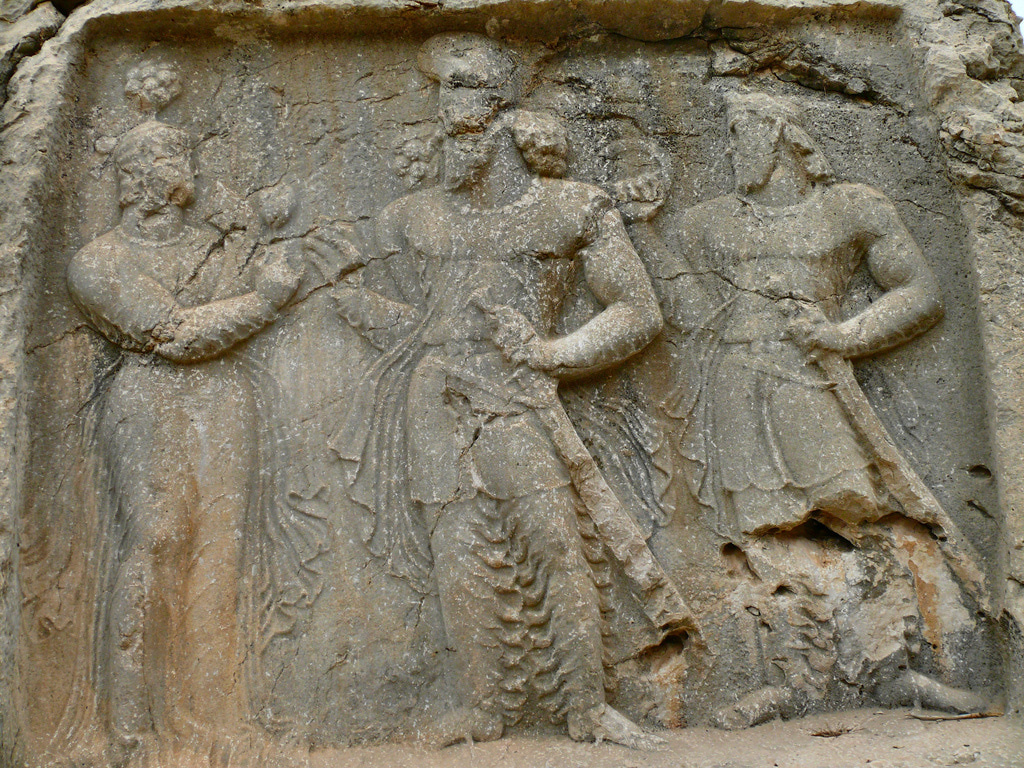
An image of Ardashir I or Bahram II (middle) and prince Shapur I or Bahram III “Sakan Shah [King of the Sakas]” (at right) and what appears to be Goddess Anahita (or a Sassanian Queen) (Picture Source: Atefeh Ashrafian, 2009).
Because the temples of Anāhīd were built beside springs or watercourses, it has been suggested that they were quite different from ordinary fire temples and had a distinct style of architecture characterized by columns and arcades (hypothesis of I. A. Orbeli, revived in C. Trever, “À propos des temples de la déesse Anahita en Iran Sassanide,” Iranica Antiqua 7, 1967, p. 122). But there is no reason why, at least in Iran, Anāhīd worship should not have been performed in fire temples. The designation of the temple at Eṣṭaḵr by the term ādur (fire), which was applied to all Zoroastrian places of worship, seems significant in this respect. Equally rash are suggestions that particular temples, for example the one at Taḵt-e Solaymān, belonged to Anāhīd (L. I. Ringbom, “Zur Ikonographie der Göttin Ardvī Sūrā Anāhitā,” Acta Academiæ Aboensis (Humaniora) 23, 1957, pp. 24ff.).
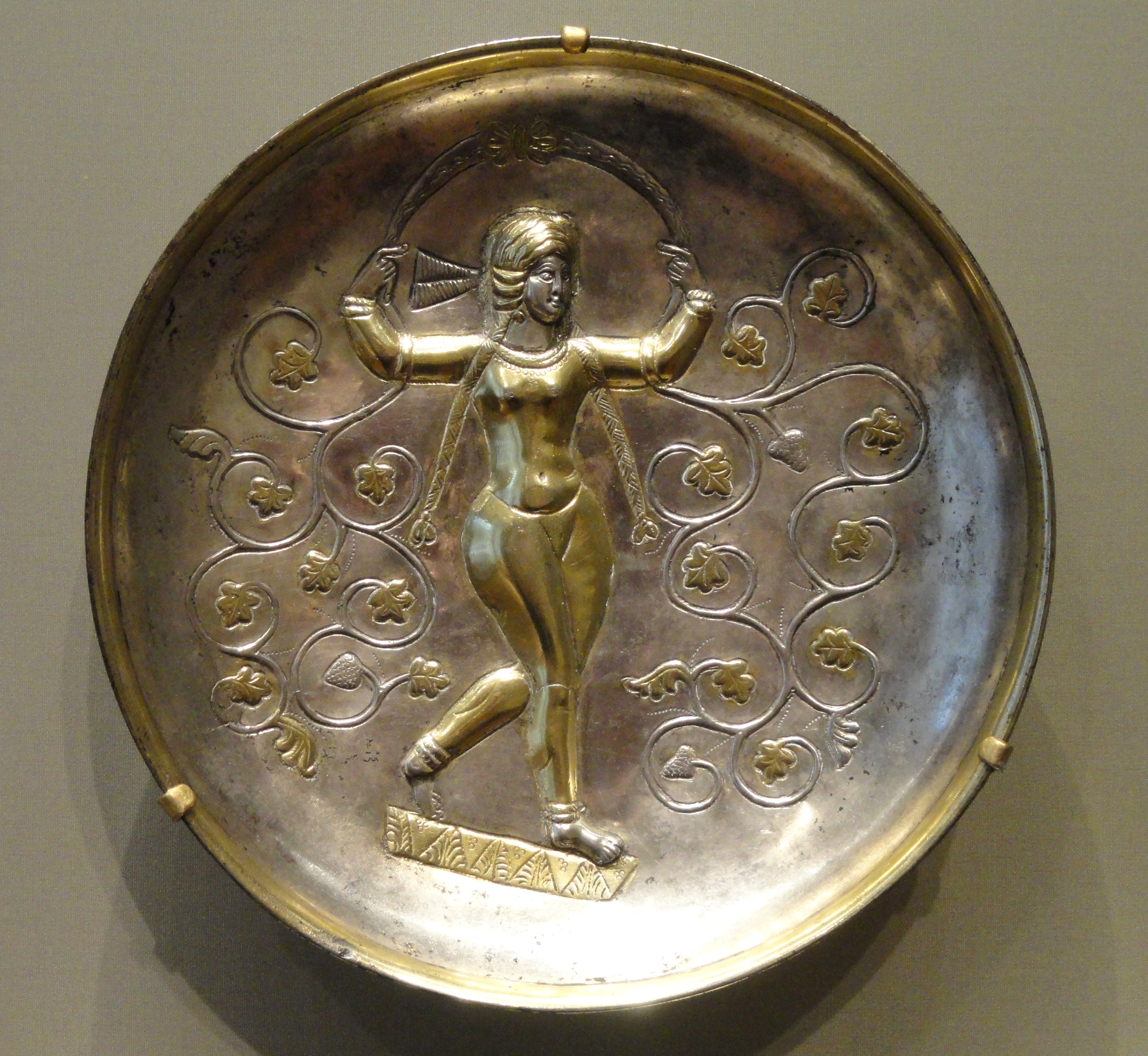
Sassanian dish housed at the Cleveland Museum of Art dated to the 5th-7th centuries CE depicting the Goddess Anahita (Picture Source: Public Domain).
Aside from the rock carvings of Naqš-e Rostam and Ṭāq-e Bostān, few figures unquestionably representing the goddess are known (see below). She is thought to appear on an Achaemenid cylinder seal (Duchesne-Guillemin, “Art et religion sous les Sassanides,” Atti del Convegno Internazionale sul Tema: La Persia nel Medioevo, Rome, 1971, p. 378 and pl. III, fig. 3), on some reliefs from the Parthian period (idem, La religion de l’Iran ancien, Paris, 1962, p. 333), and on two ossuaries, one found near Bīšāpūr (Ghirshman, Parthes et Sassanides, p. 106 and fig. 120), the other Sogdian (ibid, p. 313 and fig. 255). Anāhīd may be represented by figures to be seen on Sasanian silver utensils, which depict a nude or scantily clad woman standing in front of an arcade holding a flower or some fruit or sometimes a bird or a child (see, e.g., Trever, “À propos,” pls. XXVII-XXIX); the identification seems convincing. It has been suggested that the colonnaded or serrated crowns on Sasanian coins belong to Anāhīd (R. Göbl, Sasanidische Numismatik, Brunswick, 1968, pp. 7, 9).
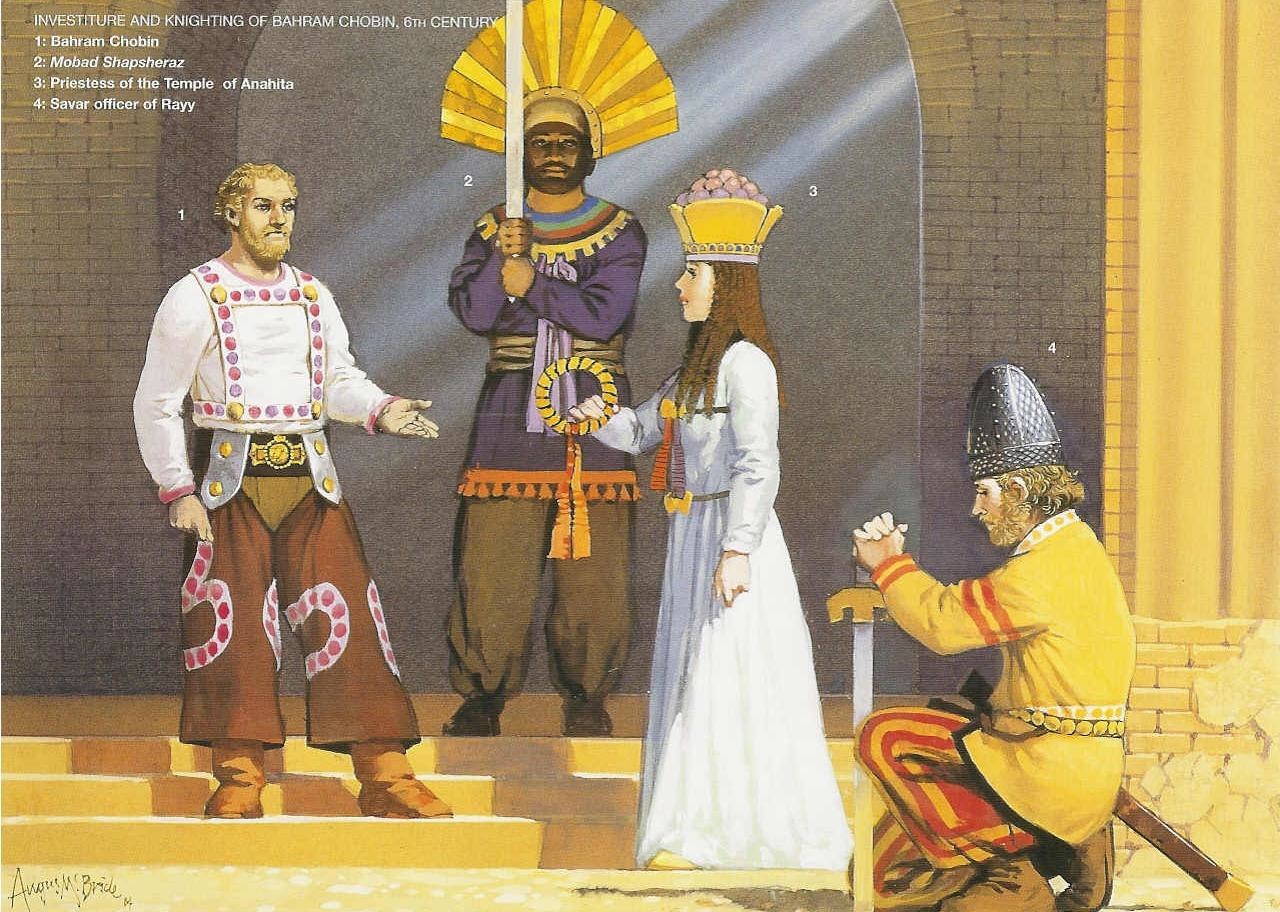
Recreation of the facade of a Sassanian palace and Bahram Chobin receiving a diadem (possibly representing the Farr or “Divine Glory”) from a priestess of the Anahita temple (Source: Kaveh Farrokh, Elite Sassanian Cavalry, 2005 –اسواران ساسانی–).
It is difficult to tell whether Anāhitā had any connection with Nanā or Nanai, a goddess of Mesopotamian origin frequently mentioned in Babylonian and Assyrian texts. In Armenia, Nana was assimilated to Athena and worshiped in a temple at the small town of Thil, but in some countries she was identified with Artemis. At Dura-Europos she was worshiped as Artemis Nanaia. It is known from Kushan coins with effigies of Nana that her cult spread as far as the Kushan territories. In the Sasanian period she is said to have been worshiped in Mesene, Susiana, Babylonia, and Arbayestan (see G. Hoffmann, Auszüge aus den syrischen Akten persischer Märtyrer, Leipzig, 1880, pp. 130ff.). Nana, who is one with Ishtar in ancient texts, seems to have been both a war-goddess and a nature-goddess. There are grounds to suppose that at an early stage the Iranian Anāhitā acquired some of Nana’s attributes, in particular her warlike character. It would be rash, however, to see Anāhīd in Nanai, “the great goddess of the whole earth,” who, according to the Acts of Mār Moʿayn (Hoffmann, Auszüge, p. 29), was one of the principal deities worshiped by Šāpūr II. Also dubious is Hoffmann’s statement (p. 155) that the Nana on the Kushan coins denotes Anāhitā.



